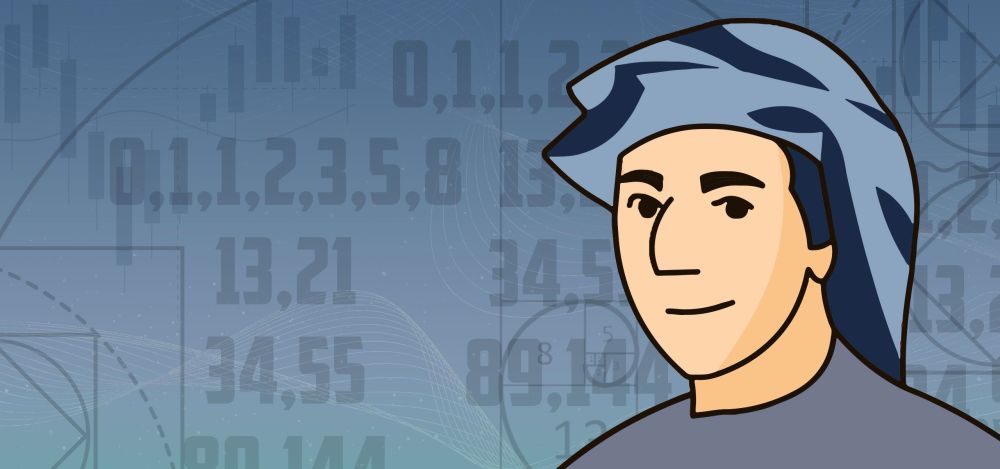Successful Forex traders are always looking for techniques and information that can benefit their trading activities. This is where the idea of technical analysis comes into play. Determining the best points of entry and exit in trading requires the ability to make adequate predictions. These predictions are typically based on both projections and historical data, in tandem with various techniques.
One of the best technical analysis techniques available is known as Fibonacci Trading. This is used to establish the connection between support and resistance areas, which allows for the use of historical data to project potential market profits. These profit margins are sought in both rising and falling markets.
The Origin of Automated Fibonacci Trading
The concept upon which Fibonacci trading is based did not originate in the discipline of currency trading. Centuries ago, a famous Italian mathematician by the name of Leonardo Fibonacci took note of the sequence that started this trading method. There was a pattern he deduced that begins with the number zero, followed by the number one. By using simple addition, a sequence is developed with number pairs. The sequence begins with “0, 1, 1, 2, 3, 5, 8, 13, 21, 34, 55, 89,” and it continues to infinity. To understand exactly how the figures are derived, see the below steps:
- Begin by placing the numbers zero then one, separated by a comma. Your sequence begins as “0,1.”
- Add the second number to the first number.
- Place a comma beside the second number, then place the result beside the comma. Your sequence then becomes “0,1,1.”
- Add the result to the number to its left.
- Place a comma, then place the new result. Your sequence then becomes “0,1,1,2.”
- Repeat the process of adding the result to the number to its left, then placing the new result to the right.
While the numeric sequence is the basis for Fibonacci trading, you should note the numbers are not the focus in the discipline. The important takeaway from the sequence is the ratios involved that separate the numbers. There is a sequence of numbers in the pattern where dividing a number by its successive entry yields a result of 0.618. As an example, consider the numbers 34 and 55, which are consecutive numbers in the sequence. If you divide 34 by 55, the result is 0.618. Furthermore, the ratio of alternate numbers in this sequence is 0.382. Consider the numbers 21 and 55, which are separated by 34 in the sequence. If you divide 21 by 55, the result is 0.382.
These ratios are used to establish the Golden Mean. This is the optimal position between two numbers. Without going too deep into the technicalities, the idea is to determine what are known as the Retracement and the Extension levels.
Retracement levels are used to determine optimal buy-in times using an analysis of support/resistance potential in moving a market. In contrast, Extension levels are used to indicate the optimal time for trade closure. This is optimized for the most profitable outcome. For reference, using the premise upon which Fibonacci sequence numbers are obtained, the following level ratios apply:
- Fibonacci Retracement Levels – 0.765, 0.618, 0.500, 0.382, 0.236
- Fibonacci Extension Levels – 1.618, 1.382, 1.000, 0.618, 0.382, 0.000
Fibonacci trading is such a popular technique because it works. So much so that many traders live by the indications that these ratios provide. These indications are the basis of many decisions in daily trading.
Why Should You Make Use of Automated Fibonacci Trading?
Consider the explanation above of the Fibonacci sequence and how it is beneficial in the world of Forex trading. Though you may understand the premise of the concept and the application of the ratios, attempting to keep track of historical data and making projections manually can be a daunting task. Here are some of the reasons you need to consider implementing Automated Fibonacci trading:
- Time savings – In the world of business, time is a quantifiable expense and the concept of opportunity cost is an important consideration. Not only do you get to lessen the time calculations and projections take, but you are also free to spend time focusing on decisions.
- Graphical representations – While it is possible to manually create graphs and charts, it is not practiced due to the large potential for human error. Software systems that automate Fibonacci trading provide accurate data in pictorial form to assist in your decision making.
- Real-time advisor – Real time software systems have the unique ability to capture data on the fly and integrate it as needed. Forex trading is a time sensitive discipline, and so automated Fibonacci trading platforms provide an edge by factoring market information into its processes as soon said information becomes available. This allows for better determination of a trade’s optimal points of entry and exit.
- Additional features – Apart from the core functionalities that are intended to make your trading process smoother, many of these systems provide neat extras that contribute to the process.
Conclusion
Fibonacci Trading is a popular yet complex discipline. Such complexities are best handled by automated software systems. With such systems in place, all you need to worry about is making good decisions with the insights provided.
-

The rhytm beneath the noise
-

You Don’t Need a Trading Style. You Need an Edge.
-

Consistency Isn’t the Goal—It’s the Outcome
-

What 2 Quadrillion Data Points Told Us
-

Math and Physics-Based Trading in Any Market Condition
-

Do not worry about anomalies
-

Consistency should not be the goal. Consistency should be the result.
-

Stop canceling fridays
-

The Elliott Wave Forecast is Subjective, Bias Driven And Backwards looking
-

Finding patterns in market data

